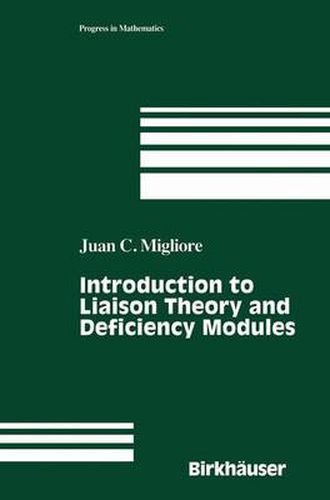Readings Newsletter
Become a Readings Member to make your shopping experience even easier.
Sign in or sign up for free!
You’re not far away from qualifying for FREE standard shipping within Australia
You’ve qualified for FREE standard shipping within Australia
The cart is loading…






This title is printed to order. This book may have been self-published. If so, we cannot guarantee the quality of the content. In the main most books will have gone through the editing process however some may not. We therefore suggest that you be aware of this before ordering this book. If in doubt check either the author or publisher’s details as we are unable to accept any returns unless they are faulty. Please contact us if you have any questions.
This work carefully examines liaison theory and deficiency modules from basic principles, taking a geometric approach. The focus is on the role of deficiency modules in algebraic geometry, particularly with respect to liaison theory, which is treated here as a subject in itself and as a tool. The structure and classification of liaison classes are explored, and a variety of ways are described in which liaison has been applied to geometric questions. The classical study of liaison via complete intersections is compared and contrasted with the relatively new study of the subject via arithmetic Gorenstein ideals.
$9.00 standard shipping within Australia
FREE standard shipping within Australia for orders over $100.00
Express & International shipping calculated at checkout
This title is printed to order. This book may have been self-published. If so, we cannot guarantee the quality of the content. In the main most books will have gone through the editing process however some may not. We therefore suggest that you be aware of this before ordering this book. If in doubt check either the author or publisher’s details as we are unable to accept any returns unless they are faulty. Please contact us if you have any questions.
This work carefully examines liaison theory and deficiency modules from basic principles, taking a geometric approach. The focus is on the role of deficiency modules in algebraic geometry, particularly with respect to liaison theory, which is treated here as a subject in itself and as a tool. The structure and classification of liaison classes are explored, and a variety of ways are described in which liaison has been applied to geometric questions. The classical study of liaison via complete intersections is compared and contrasted with the relatively new study of the subject via arithmetic Gorenstein ideals.